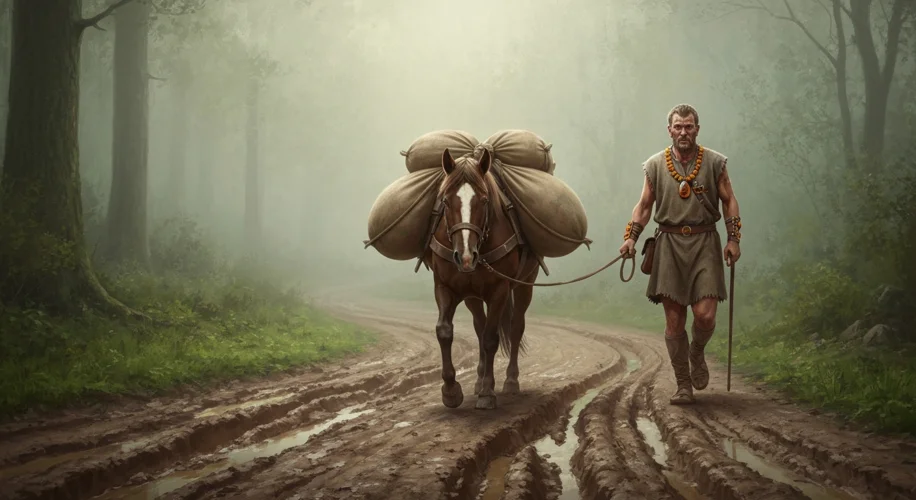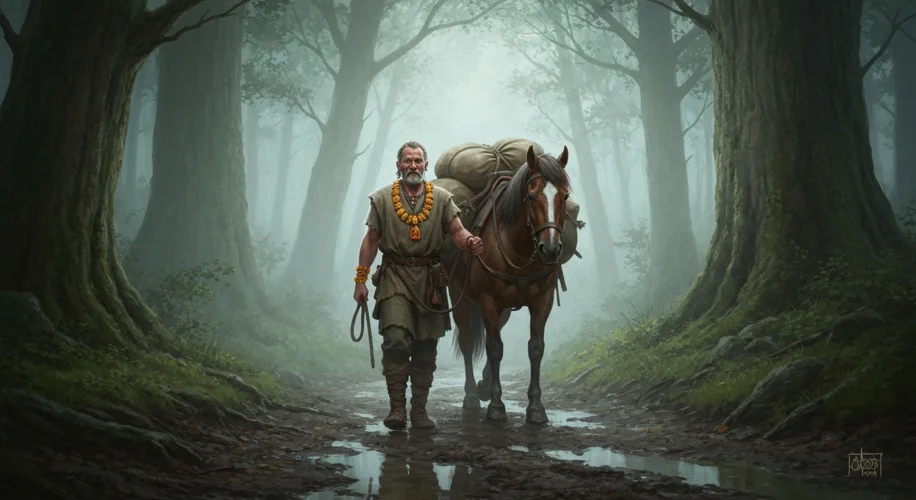Long before the clatter of Roman legions echoed across the Rhine, and even before the iconic legions themselves carved their straight roads into the landscape, a vibrant network of trade pulsed through the heart of what would become Germania. These weren’t the grand, stone-paved arteries of an empire, but rather the subtle, winding veins of the Iron Age – ancient trade routes that connected disparate peoples, fostered cultural exchange, and laid the economic groundwork for future interactions.
Imagine the year is 300 BCE. The landscape of Germania is a mosaic of tribes – the Suebi, Cherusci, Chatti, and many more. Their lives are deeply intertwined with the rhythms of nature, their societies built on agriculture, hunting, and the skilled craftsmanship of iron. Yet, they are not isolated. From the Baltic coast to the Alpine foothills, and even reaching across the vast European plains, whispers of distant lands and exotic goods traveled on the wind and along the rivers.
The Amber Road and the Rivers of Commerce
One of the most significant arteries was the Amber Road. This wasn’t a single, paved highway, but a series of overland and riverine routes that originated in the Baltic region, the source of the precious amber that captivated the ancient world. This fossilized tree resin, warmed by the sun and carved into beautiful ornaments, was a highly prized commodity. It moved south, through what is now Poland and the Czech Republic, eventually reaching the Roman Empire and even finding its way to the Mediterranean.

But amber wasn’t the only treasure. The great rivers of Germania – the Rhine, the Elbe, the Danube – served as vital highways. These waterways facilitated the transport of bulkier goods and acted as conduits for ideas. Along these rivers, Germanic tribes traded with each other, but also with peoples from further afield. Imagine dugout canoes laden with furs, hides, salt, and iron tools making their way downstream, meeting other boats carrying pottery, grains, and perhaps even wine brought from the south.
Goods That Crossed the Land
The economic lifeblood of these routes was diverse. For the Germanic peoples, iron was a cornerstone. Their skill in smelting and forging iron allowed them to produce not only weapons and tools but also objects of trade. In return, they sought items that enhanced their lives and status:
- Luxury Goods: Amber, of course, was paramount. But also imported textiles, finer pottery, and glass beads, which spoke of advanced craftsmanship from distant workshops.
- Raw Materials: Salt was crucial for preserving food, and its procurement often involved long-distance trade. Metals, beyond iron, might also have been sought.
- Foodstuffs and Drinks: While largely self-sufficient, certain regions might have traded surplus grain. Wine, a luxury in the cooler northern climes, was a highly desirable import from the Mediterranean.
- Slaves: Tragically, a common commodity in the ancient world, slaves were often a significant part of trade networks, captured in raids or through other means.
The People in Motion
Who were the people traversing these routes? They were not a monolithic group. We can envision hardy merchants, often associated with specific tribal elites, managing caravans or flotillas. There were also itinerant traders, perhaps individuals or small family units, who moved seasonally, connecting local markets. These interactions weren’t always peaceful; the line between trade and raiding was often blurred. Yet, the persistent movement of goods suggests a desire for cooperation and mutual benefit.
The impact of these routes on regions like Saxony, though perhaps on the periphery of the most well-trodden paths, would have been felt. While not a primary hub like the Rhine or Danube, Saxony would have been connected through a web of secondary routes. Imagine goods trickling in from the north, along the Elbe, or overland from the south, bringing influences and materials that shaped local life. Archaeological finds, such as pottery fragments from distant regions or Roman coins appearing in local hoards, provide tangible evidence of this connectivity.
Echoes in the Earth
Archaeological discoveries offer invaluable insights into these ancient networks. Excavations of Iron Age settlements in Germania have unearthed artifacts that clearly did not originate locally, pointing to long-distance exchange. Coin hoards, often buried for safekeeping, can reveal the extent of monetary influence and trade partners. Even the analysis of human remains can sometimes shed light on migration patterns and dietary exchanges.
The story of Iron Age trade in Germania is not about grand empires building roads, but about the persistent human drive for connection, for acquiring the new and the necessary. It’s about the subtle yet powerful ways in which distant lands and cultures influenced each other, shaping societies and economies long before the well-documented Roman era. These unseen arteries, pulsing with the exchange of goods and ideas, are a testament to the enduring human spirit of commerce and connection.

